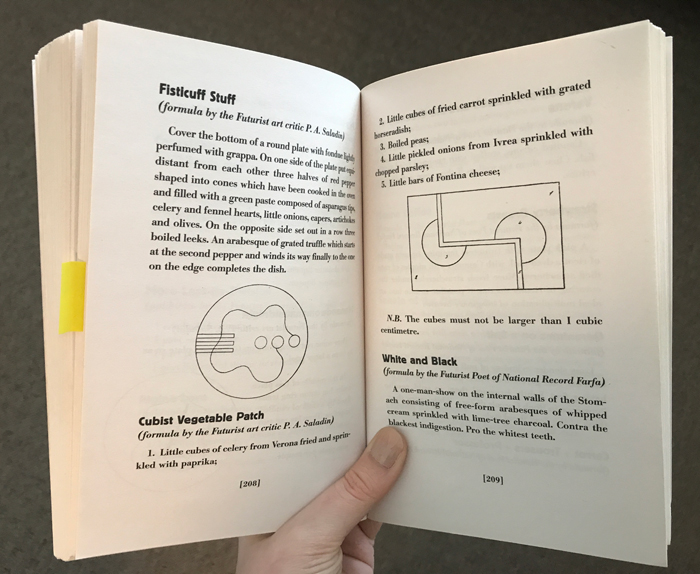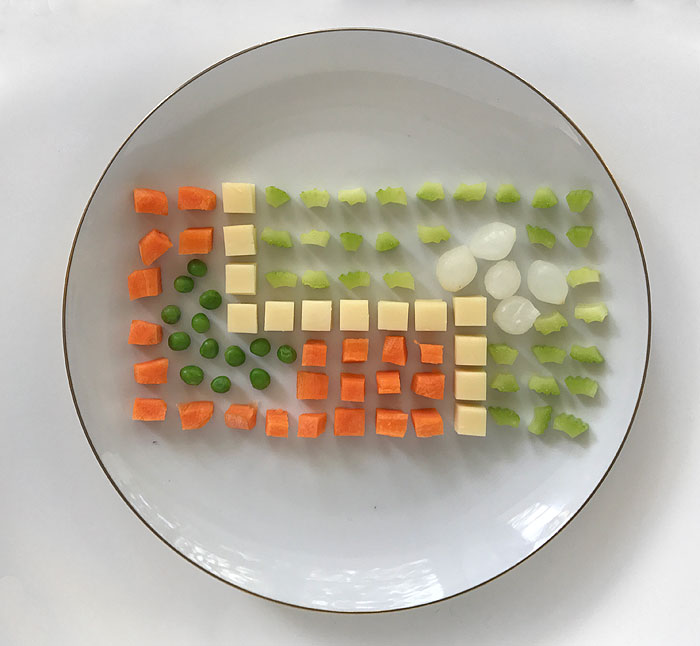In 1932, two full decades after the first Futurist Manifesto, Italian artist Filippo Tommaso Marinetti published La Cucina Futurista (The Futurist Cookbook); a collection of culinary related statements, newspaper articles, letters, accounts of banquets, and “formulas,” the Futurist term for recipes. This volume, which functions as an archive, outlines the various ways the Futurists used edible materials in their practice specifically within a performative context.

In a quest for order and precision, the formulas in La Cucina Futurista also go as far as to include diagrams to accurately convey the geometric configurations of the meals. One such example is Cubist Vegetable Patch, a formula by the art critic P.A. Saladin. The diagram maps a horizontal rectangle with a zig-zag line made of Fontana cheese running top to bottom dividing the shape into two parts, with cubes of fried carrot sprinkled with horseradish on the left and celery with paprika on the right. On each of the two pivot points of the zig-zag are three-quarters of a circle filled with boiled peas on the left and little pickled onions on the right topped with parsley.(1) While the directions in the formula call for each ingredient (excluding the peas and pearl onions) to be cut into one centimetre uniform cubes, the dish itself – shifting from pale green to vibrant orange on the plate – presents a colouristic vision of a dynamic meal.
(1) Filippo Tommaso Marinetti, The Futurist Cookbook, trans. Suzanne Brill (London: Trefoil Publications; San Francisco: Bedford Arts, 1989), 208-209.


2 comments
Julie says:
Sep 19, 2017
I love it! Did you create that? It looks like something you would make for this blog.
Feasting on Art Project Archive | Megan R. Fizell | Art Historian & Theorist says:
Dec 29, 2021
[…] as I realised instruction-based food art in my home kitchen by following a similar process (see Futurists – Cubist Vegetable Patch, Alison Knowles – Salad, and Rirkrit Tiravanija – Curry Paste). This project archive includes […]